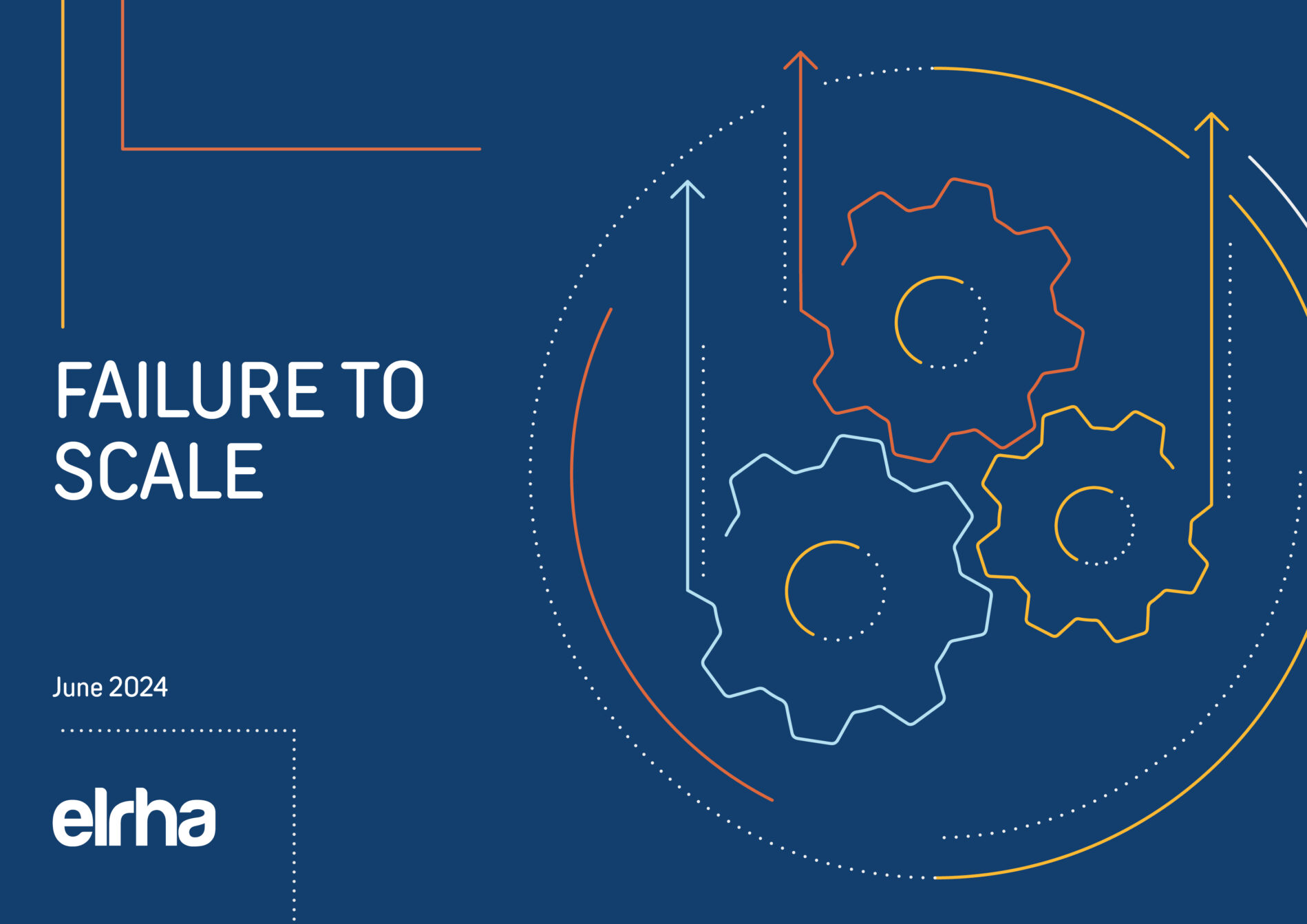Adopting Humanitarian Innovation: Key lessons from an adoption challenge

Innovation is essential to improving outcomes in humanitarian settings. Yet, many promising innovations never move beyond the pilot stage. Why? Because the process of adoption—integrating and scaling solutions in real-world, complex environments—is far more challenging than often anticipated.
This new report, “Adopting Humanitarian Innovation: Key Lessons from an Adoption Challenge,” and its Executive Summary explores what makes adoption work, what slows it down, and what support systems are needed to bring innovations to scale in humanitarian contexts. Produced by FLUSH in collaboration with Elrha’s Humanitarian Innovation Fund (HIF), the report shares practical insights and strategic recommendations based on the experiences of six grantee organisations adopting innovations in the humanitarian space.
Since 2011, Elrha’s HIF has supported the development and testing of innovative solutions to improve humanitarian outcomes. While there is no shortage of new ideas, many innovations face a “funding cliff” between pilot and scale, limited flexibility in funding mechanisms, and operational challenges that hinder their adoption. In response, Elrha created the Adoption Challenges: a targeted initiative focused on supporting humanitarian organisations in adopting and integrating proven innovations into their programming.
Unlike traditional innovation funding that supports creators, the Adoption Challenges centre on the adopters: operational humanitarian organisations that are positioned to embed solutions into existing systems. Two challenge rounds were launched: one focused on water, sanitation and hygiene (WASH) innovations, and another focused on adoption in high-severity crisis contexts. Grantees included international NGOs and research institutions working across diverse areas such as menstrual health, mental health, and nutrition.
This report synthesises learning from these six adoption projects to better understand what innovation adoption really looks like in practice. Drawing on document reviews, interviews, and collaborative workshops, it explores the complex realities of integrating innovations into humanitarian operations. The findings highlight what factors support or hinder successful adoption, and offer actionable insights for funders, implementing organisations, and policy stakeholders.
The report is organised around four critical themes that emerged across the adoption projects:
- Innovation is poorly defined. Many organisations struggled to determine what qualified as an “innovation” in their work. Some found that what was intended as an adoption project still required substantial testing and redesign. This ambiguity complicates funding, planning, and measuring success.
- Adaptation is essential. Successful adoption required considerable localisation, including translating materials, aligning with cultural norms, and adjusting technical aspects. Yet most projects underestimated the time, expertise, and resources required for adaptation. Treating adaptation as a distinct, well-funded phase is essential.
- Scaling adoption is complex. Organisations often tracked basic outputs, like beneficiaries reached, without clear strategies for sustainable or systemic scale. Effective scaling depended on factors such as strong evidence of impact, integration with existing systems, and adaptable solutions that could respond to shifting contexts.
- Partnerships drive adoption. Across all projects, partnerships were central to success. Government engagement, technical collaboration, and community involvement each played important roles. However, partnerships required careful planning, ongoing management, and significant resource investment, especially in fluid humanitarian environments.
Key takeaways:
The report reinforces that adoption is not a linear process. Even when innovations have demonstrated effectiveness, their successful uptake depends on local context, operational feasibility, and alignment with the priorities and capacities of implementing organisations.
Projects that achieved more consistent progress invested early in adaptation, built strong partnerships, and established systems for ongoing support. Delays and challenges were common, but often led to meaningful project improvements. Importantly, success was not only about technical performance, but also about the innovation’s value proposition, cultural relevance, and the organisation’s ability to navigate complexity.
Monitoring and evaluation practices also varied, with many projects struggling to define or measure what successful adoption meant in their context. The lack of clear standards highlights a need for shared frameworks and better support for tracking outcomes beyond implementation metrics.
Recommendations:
The report offers specific recommendations for funders, innovators, and adopting organisations. For funders, it highlights the need to tailor grant structures to different stages of innovation, support adaptation phases explicitly, and clarify expectations around adoption and scale. For innovators, it calls for early planning around adaptation, stakeholder mapping, and readiness for real-world complexity. For adopters, the report provides guidance on designing for scale, engaging communities ethically, managing risks, and investing in sustainability from the outset.
Acknowledgements:
This report was developed by FLUSH, in partnership with Elrha and with funding from the Foreign, Commonwealth & Development Office (FCDO). We thank the six Adoption Challenge grantees for their contributions and the FLUSH Associates who authored this report: Kimberly Worsham, Sarah Lebu, Prince Antwi-Agyei, and Jennifer Barr.